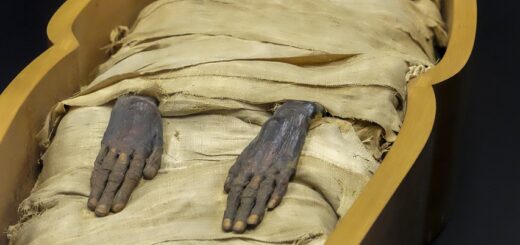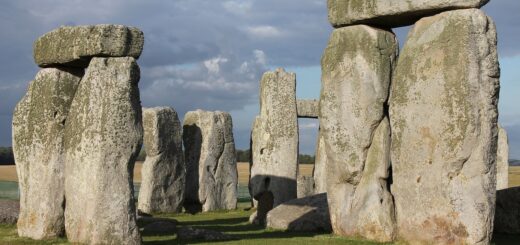Latin American Holiday Traditions are

The Nativity and the arrival of the New Year are commemorated with joyous and often enchanting festivities.
Holidays in Latin America are marked by a celebration of faith, family, and community in a vibrant and occasionally whimsical manner. Traditions vary widely, from awakening loved ones with joyful Christmas melodies in the wee hours to crafting elaborate sculptures from massive radishes and igniting effigies to dispel negative energies from the year gone by.
Over the span of five centuries since the arrival of Spanish colonizers in the Western Hemisphere, the Roman Catholic Church has significantly influenced the cultural tapestry of Latin America. Its ceremonies commemorating the birth of Jesus Christ dominate the holiday calendar, encompassing midnight Masses and reenactments of biblical nativity scenes. Despite early attempts by Spanish priests to suppress the spiritual customs of African and Indigenous communities, some rituals endured, often integrating into the Church’s observances.
While many of these festive customs originated from Spain and flourished in Latin America, they’ve also found their way into Latinx communities across North America.
Horseradish Festival in Oaxaca
On the Noche de Rábanos, observed on December 23, crowds gather in the main square of Oaxaca, Mexico, patiently lining up for hours to witness the remarkable display of oversized radishes meticulously carved into intricate designs, ranging from nativity scenes to depictions of Oaxacan folklore and even the latest political caricatures.
This tradition traces its roots back to the late 19th century. Legend has it that two friars unearthed unusually large, misshapen radishes that had remained in the ground for an extended period. Local farmers, recognizing their uniqueness, sculpted these vegetables into figures as novelties for their annual Christmas market. In 1897, Mayor Francisco Vasconcelos transformed this quirky attraction—originally a marketing ploy—in an area renowned for its vibrant wood carvings, into a formal radish-carving competition. This event now showcases works by carvers of all ages across various categories.
Las Posadas
For nine consecutive nights starting on December 16, individuals portraying Mary and Joseph (often with Mary riding a donkey) lead processions of Christians through towns and cities in Mexico, Guatemala, Honduras, and parts of the southwestern U.S. These reenactments symbolize the couple’s journey before Jesus’s birth in a Bethlehem manger. During each night of las Posadas—meaning “inns” in English—the singing processions are turned away from various homes along their route until they finally find a welcoming house that hosts them for a night of song, scripture, food, and entertainment, featuring star-shaped piñatas for the children. The ninth and final night of this “pilgrimage” is marked by vibrant festivities, fireworks, and, in some places, transitions seamlessly into the midnight Christmas Mass.
Originating more than 400 years ago through the efforts of missionaries in Mexico and codified by a Papal bull, this tradition melds Roman Catholic observances related to Christ’s birth with elements from the popular Aztec winter solstice festival and the honoring of the Aztec mother goddess Tonantzin. Tonantzin was an Indigenous pre-Hispanic deity, later merged in public consciousness with the iconic Virgin of Guadalupe after an Indian peasant witnessed an apparition of a brown-skinned Virgin Mary on the same hill where Tonantzin’s temple once stood.
Midnight Mass – La Misa de Gallo
To commemorate the birth of Christ, millions of Catholics across Latin America and much of the globe congregate in churches for midnight Mass on December 25, or a few hours earlier on Nochebuena (Christmas Eve). Referred to in many Latin American regions as the Misa de Gallo, or “the rooster’s mass,” it symbolizes a collective vigil marking the arrival of Christ.
In the fifth century, Pope Sixtus III established the tradition of conducting the midnight Mass at the nativity scene situated behind the altar of Rome’s Santa Maria Maggiore basilica. Initiating the vigil mass at the “crow of the rooster,” an ancient Roman expression denoting the commencement of a new day at midnight, supposedly gave this special Mass its name.
In certain countries, the scripture readings and jubilant music from the midnight Mass are broadcasted via radio or television, resembling the services offered by the Pope in the Vatican.
Novena of Aguinaldos
Families and communities across Colombia, Ecuador, and parts of Venezuela come together for nine consecutive nights, engaging in prayer, lavish feasts, and the singing of religious songs known as villancicos, all in anticipation of the birth of Christ on December 25. Various households take turns hosting these gatherings, while the faithful also assemble in churches, with some individuals dressed as Joseph, Mary, and the baby Jesus, accompanied by animals commonly seen in nativity scenes.
Novena of Aguinaldos, or the novena to baby Jesus, features specific prayers designated for each night and was composed by an 18th-century Franciscan missionary named Fernando de Jesús Larrea. Initially published in 1743, these prayers underwent modifications and updates in the 19th century courtesy of a nun named Maria Ignacia. She introduced verses known as Los Gozos, traditionally sung to the accompaniment of guitars and harps, marking the conclusion of each night of the novena.
Parrandas
In Cuba and Puerto Rico, the concept of parrandas gives rise to distinct yet vibrant holiday celebrations.
In Cuban towns, las parrandas manifest as spirited, carnival-like festivals infused with a spectacle of lights, music, ornate floats, and dazzling fireworks displays. The tradition traces its roots back to the 19th century in Remedios, where a young priest aimed to boost church attendance by dispatching children to create uproarious noise in the streets.
Meanwhile, in Puerto Rico, parrandas embrace a grassroots-style revelry. Enthusiastic groups armed with guitars, trumpets, percussion instruments, and handheld drums known as panderetas or panderos venture to someone’s home in the evening or, in some cases, awaken them during the early hours of the morning. They serenade and play music at the host’s doorstep until welcomed inside. The hosts extend traditional Puerto Rican refreshments as the festivities persist, alternating between traditional Christmas songs called aguinaldos and improvisational verses that humorously touch upon the year’s happenings or lightheartedly express a desire for a drink.
Three Kings Day
In many parts of Latin America, January 6th commemorates Three Kings Day, a special occasion when children receive gifts. This tradition harkens back to the biblical narrative where the infant Jesus received gifts of gold, frankincense, and myrrh from the three wise men, also known as the magi.
A legacy from Spanish culture, this holiday, also referred to as the Epiphany, marks the moment in Western Christian belief when God revealed his physical manifestation through his son, Jesus.
Children in various countries place shoes by the door to guide the three kings to their gifts, sometimes leaving hay or grass under their beds for the magi’s camels. By morning, gifts appear either under the bed or beneath the Christmas tree, which remains standing until at least January 7.
The day is celebrated with parties, family gatherings, parades, and festivals in major cities. In Mexico, the round Three Kings bread, known as rosca de reyes, is shared among families, friends, and colleagues. This bread is adorned with candied fruit symbolizing jewels on a crown. Whoever discovers the inch-long baby Jesus doll baked into the bread is tasked with preparing tamales for the upcoming Christian holiday Candlemas on February 2nd.
¡Feliz Año Nuevo!
Throughout Latin America, the arrival of the new year is marked by a festive celebration encompassing food, fire, and merrymaking. As New Year’s Eve unfolds, family dinners transition into vibrant street fireworks or grand pyrotechnic exhibitions in prominent public squares found in cities like Valparaiso in Chile, Guatemala City, or Mexico City.
The tradition of consuming 12 grapes—one for each toll of the countdown to midnight—originating from Spain, persists across Latin America as a means to secure good luck and prosperity for the upcoming year. Additionally, in various countries, the choice of yellow underwear is believed to invite prosperity, while red undergarments are associated with fostering love.
In Ecuador, a distinctive custom involves men dressed in drag, symbolizing the “widows” bidding farewell to the past year, captivatingly dancing in the streets and requiring passing drivers to offer a toll for passage.
Moreover, in numerous Latin American nations, individuals symbolically purge their past-year troubles by crafting life-sized effigies or dummies. Depending on the country, these effigies might be constructed using masks and papier-mâché or by stuffing old clothes with paper. At the stroke of midnight, these effigies are set ablaze in a symbolic act of bidding adieu to the past year’s challenges.








